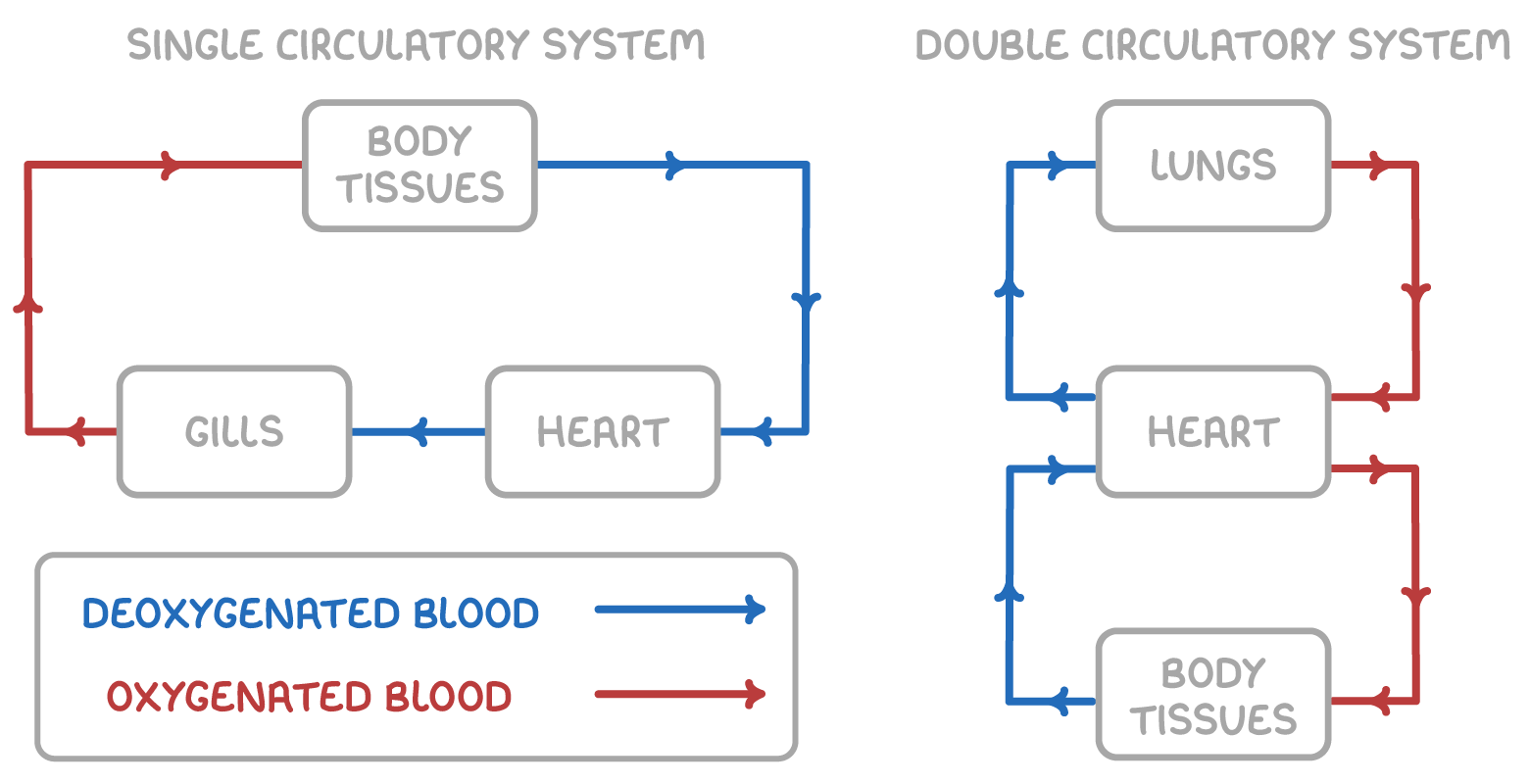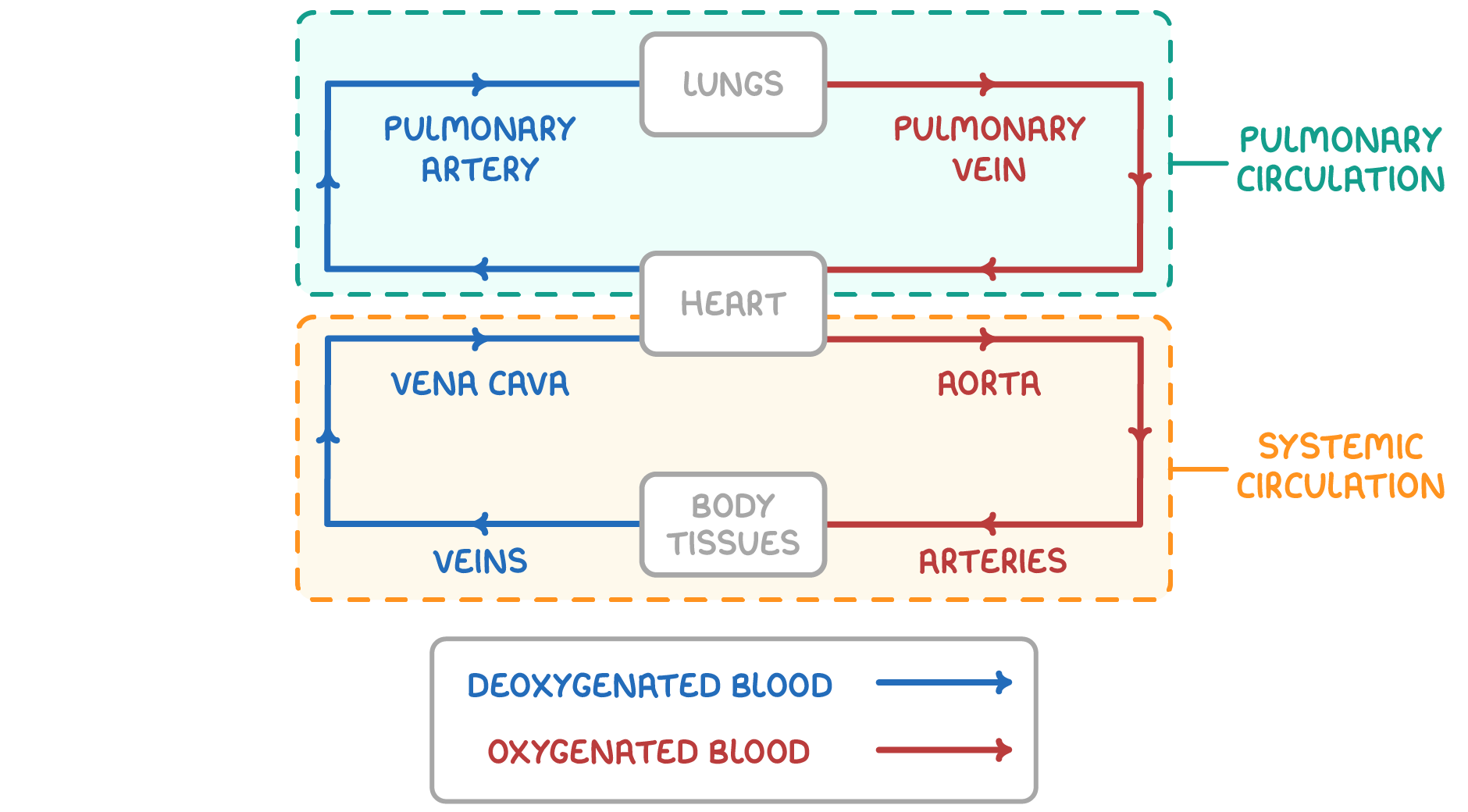Introduction to the Circulatory System
This lesson covers:
- Why multicellular organisms need transport systems
- The differences between single and double circulatory systems
- Open and closed circulatory systems
- The structure of the mammalian circulatory system
Why do multicellular organisms need transport systems?
Multicellular organisms need internal transport systems like the circulatory system.
This is because, compared to single-celled organisms:
- Multicellular organisms are larger, so the diffusion distance across their surface would be too large.
- Multicellular organisms have a higher metabolic rate.
- Multicellular organisms need to supply nutrients and oxygen rapidly to a larger number of active cells.
So overall, diffusion alone would be too slow.
Single and double circulatory systems

Different animal groups may have single or double circulatory systems.
Fish have a single circulatory system
This means that blood passes through the heart only once per circuit.
The single circulation in fish occurs as follows:
- The heart pumps blood to the gills to pick up oxygen, and blood flows directly from the gills to the rest of body to deliver oxygen.
Mammals have a double circulatory system
This means that blood passes through the heart twice per circuit.
The double circulation in mammals occurs as follows:
- The right side of the heart pumps deoxygenated blood to the lungs to pick up oxygen.
- The left side of the heart pumps oxygenated blood to the rest of the body, which gives an extra push to deliver this blood more quickly to distant body tissues.
Open and closed circulatory systems
Circulatory systems may be open or closed.
Vertebrates have closed circulatory systems:
- Their blood is enclosed in vessels.
- Arteries generally distribute oxygenated blood.
- Veins generally return deoxygenated blood to heart.
Some invertebrates like insects have open systems:
- Their blood flows freely through the body cavity.
- Blood returns to heart through valves.
- Blood doesn't just transport oxygen.
Mammalian circulatory system structure
Mammals have a closed, double circulatory system. The two main divisions of the mammalian circulatory system are the systemic system and the pulmonary system.

Systemic circulatory system:
- Oxygenated blood is pumped out of the heart via the aorta to most body tissues.
- Deoxygenated blood is returned to the heart via the vena cava from the body tissues.
Pulmonary circulatory system:
- Deoxygenated blood is pumped out of the heart via the pulmonary artery to the lungs.
- Oxygenated blood is returned to the heart via the pulmonary vein from the lungs.